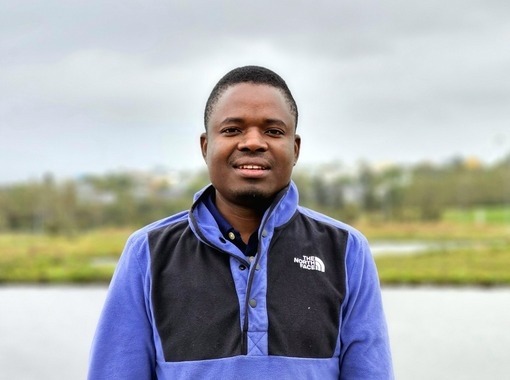Doctoral Defense in Geophysics - Makoye Mabula Didas

Aðalbygging
The Aula
Doctoral candidate:
Makoye Mabula Didas
Title of thesis:
Regional thermal anomalies in Tanzania and improved geothermal conceptual models of the Ngozi and Rungwe prospects in SW Tanzania based on results from resistivity and potential field studies
Opponents:
Dr. Adam Schultz, Professor of Geophysics Oregon State University, USA
Dr. Juanjo Ledo, Professor Department of Geodynamics and Geophysics, Barcelona, Spain
Advisor:
Gylfi Páll Hersir, Geophysicist, Independent Researcher, Reykjavik, Iceland
Also in the doctoral committee:
Dr. Halldór Geirsson, Associate Professor, Faculty of Earth Sciences, University of Iceland
Dr. Egidio Armadillo, Professor, Universita’ di Genova, Italy
William Cumming, Geophysicist, Cumming Geoscience, Santa Rosa CA, USA
Dr. Ásdís Benediktsdóttir, Geophysicist, Reykjavík Energy, Iceland
Dr. Daniele Rizzello, Independent Geophysicist Researcher, Tellus-Explora S.A.S., Italy
Chair of Ceremony:
Dr. Guðfinna Th Aðalgeirsdóttir, Professor and Vice Head of the Faculty of Earth Sciences, University of Iceland
Abstract:
The main goal of the thesis is to evaluate the geothermal potential of Tanzania, in East Africa, by integrating magnetotelluric, magnetic, and gravimetric data and models with existing petrophysical, seismological, volcanological, geochemical and structural information. In this study, heat flux in Tanzania was determined from the radially averaged power spectra of the total magnetic field, interpreted as a proxy for the Curie Point Depth (CPD). The CPD was correlated to independent Moho depth estimates from seismic receiver functions and gravity data. The results show high heat flux anomalies (>100 mW/m2) situated along the East African Rift System (EARS). Generally, these high heat flow anomalies align with known surface geothermal manifestations and shallow Moho depth (approx. 30 - 35 km) compared to the average Moho depth of 40 km for most of Tanzania. According to the thesis findings, the most compelling areas for geothermal exploration in Tanzania are the EARS triple junction in the Rungwe Volcanic Province (RVP), the north Tanzania divergent zone in the eastern branch of the EARS, and the areas of the Proterozoic collision boundaries reactivated by the EARS.
At a more detailed level, the thesis focuses on the investigation of the prospective geothermal resources in the RVP. High-resolution aeromagnetic data combined with known faults, seismic epicentres, and known surface geothermal manifestations, including thermal springs, hot ground areas, and 3D MT resistivity anomalies are employed to identify concealed structures which likely enhance permeability of geothermal systems and demarcate boundaries of geothermal systems within the RVP. A 3D resistivity model based on newly acquired and existing magnetotelluric data was used to update the geothermal conceptual model of the Ngozi system and to define a new high-temperature geothermal prospect beneath Rungwe volcano in the RVP.
The 3D MT resistivity inversion results in Ngozi and Rungwe suggest magmatically heated geothermal systems with two reservoirs: a small one below Ngozi caldera and a larger one beneath Rungwe volcano. A deep conductor at ~6 km depth between Ngozi and Rungwe is interpreted as a magma chamber feeding heat to the geothermal systems. The identified Rungwe geothermal system in addition to the previously interpreted Ngozi system has significantly expanded opportunities for discovering geothermal resources in the planned drilling campaign.
Structural investigations in the RVP utilizing magnetic data revealed that the potential areas for geothermal resources in the RVP are located at the intersections between the NW-SE trending intra-rift faults with NE-SW, N-S, and E-W trending faults. These zones of likely enhanced permeability are bound by low permeable Precambrian rocks to the west and east. An updated structural map was developed based on aeromagnetic data interpretation constrained by 2D-forward modelling of magnetic anomalies, integrated with previously reported faults, seismic epicentres, 3D magnetotelluric resistivity models, and surface geothermal features. The thesis work has significant implications for geothermal resource targeting and development in Tanzania and provides several examples of how to improve the search for geothermal resources worldwide.
About the candidate:
Makoye Mabula Didas was born on February 5, 1983, in Ukerewe district, Mwanza region. He was admitted to the University of Dar es Salaam where he pursued a Bachelor of Science degree in geology and graduated in 2010. Following his graduation, Didas worked as an exploration geologist at Benzu Minerals Resources from 2010-2013 in Tanzania and also worked on gold exploration projects in Ethiopia in 2013. In 2013, he rejoined the Department of Geology at the University of Dar es Salaam and completed a M.Sc. in geology in 2016. During his M.Sc. studies, he worked as a Tutorial Assistant at the University of Dodoma in Tanzania. After earning his M.Sc. degree, Didas joined the Tanzania Geothermal Development Company Limited (TGDC) as a Geophysicist and has been working there since. In 2018 he took part in the Six Month Geothermal Training Program at the UNU-GTP in Iceland. He is currently pursuing a PhD in Geophysics at the University of Iceland with funding from GRO-GTP (formerly UNU-GTP). During his PhD study, he has been involved in the exploration of geothermal projects in Tanzania and gold exploration projects. He has also updated the conceptual model of the high-temperature geothermal system in the Ngozi prospect and developed a geothermal conceptual model of the newly discovered large geothermal system below the Rungwe volcano. Additionally, he has discovered at least five medium-small scale gold deposits in Tanzania, producing an average of 60 kg of gold monthly. Mr. Didas is married to Jane Gelard Kilongo and they have a son, Ebenezer, and a daughter, Eliana.
The Doctoral Candidate Makoye Mabula Didas



